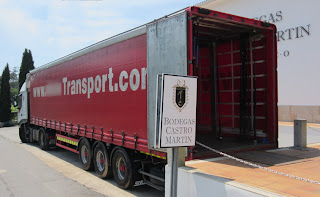Choosing your wine
March 19th, 2013 | Retail
Whether you find yourself in a shop, a supermarket, or in a posh restaurant, making your selection of wine is not only a very, very daunting task, but it is also, of course, purely subjective. The wines that I like or recommend could very easily be hated by someone else. I know this from experience, as in my previous life as a wine buyer the question that I was most often asked was “what wine should I drink”? My reply was always the same….. “drink what you enjoy” – in other words no one can tell you what you should or shouldn’t like.
The next problem might be that if you do find yourself in an expensive restaurant then your situation becomes even more complicated. Firstly, you don’t want to make what could be a very costly mistake, and secondly you don’t want to choose something that is repulsive with your food – hence the fact that there should be an experienced sommelier to help you. If they know their job properly then they should be able to guide you safely through the minefield that is their wine list, and make the appropriate recommendations.
So what do you do in a supermarket? Buy the same wine week-in week-out just to be on the safe side? On a supermarket shelf the two bottles adjacent to each other might be from the same country, but they could be wildly different in style. So what’s the answer?
One UK supermarket chain has at least come up with an original idea – to arrange their display by wine style rather than just by simple geographical origin (as most do). Instead the signs in their aisles will direct you to Fresh, Smooth, Sweet or Intense wines. The supermarket in question, William Morrisons, have also taken the idea one step further…. they have devised a test to help guide you to a specific category of wine that you might enjoy. Perhaps a bit too sophisticated an idea for your average supermarket shopper, but an idea that breaks the mould and for that reason alone, has to be applauded. Incidentally, I took the test myself and was just a little perplexed by the result, telling me that my preference was for sweet wine (which is actually not the case), so if you want to play along just click here and take the test yourself. It’s simple, it’s fun and it’s actually quite well made even if you don’t agree with the result.
Whether you find yourself in a shop, a supermarket, or in a posh restaurant, making your selection of wine is not only a very, very daunting task, but it is also, of course, purely subjective. The wines that I like or recommend could very easily be hated by someone else. I know this from experience, as in my previous life as a wine buyer the question that I was most often asked was “what wine should I drink”? My reply was always the same….. “drink what you enjoy” – in other words no one can tell you what you should or shouldn’t like.
The next problem might be that if you do find yourself in an expensive restaurant then your situation becomes even more complicated. Firstly, you don’t want to make what could be a very costly mistake, and secondly you don’t want to choose something that is repulsive with your food – hence the fact that there should be an experienced sommelier to help you. If they know their job properly then they should be able to guide you safely through the minefield that is their wine list, and make the appropriate recommendations.
So what do you do in a supermarket? Buy the same wine week-in week-out just to be on the safe side? On a supermarket shelf the two bottles adjacent to each other might be from the same country, but they could be wildly different in style. So what’s the answer?
One UK supermarket chain has at least come up with an original idea – to arrange their display by wine style rather than just by simple geographical origin (as most do). Instead the signs in their aisles will direct you to Fresh, Smooth, Sweet or Intense wines. The supermarket in question, William Morrisons, have also taken the idea one step further…. they have devised a test to help guide you to a specific category of wine that you might enjoy. Perhaps a bit too sophisticated an idea for your average supermarket shopper, but an idea that breaks the mould and for that reason alone, has to be applauded. Incidentally, I took the test myself and was just a little perplexed by the result, telling me that my preference was for sweet wine (which is actually not the case), so if you want to play along just click here and take the test yourself. It’s simple, it’s fun and it’s actually quite well made even if you don’t agree with the result.














